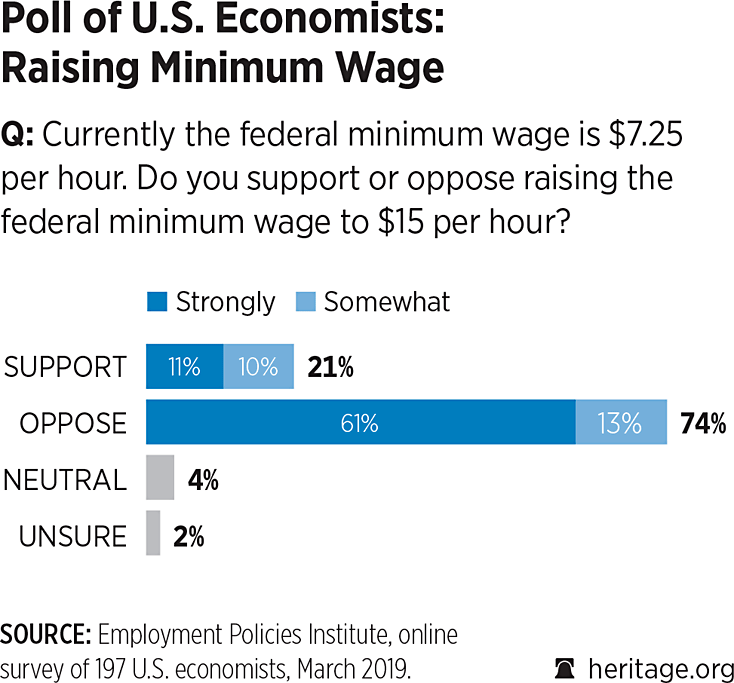Talking Points
- A $15 federal minimum wage is a misguided attempt to increase incomes. In reality, it would eliminate jobs for workers with the fewest skills and the least amount of experience.
- Raising the federal minimum wage ignores regional cost-of-living differences and disproportionately affects states with lower living costs.
- Minimum wage increases create winners and losers. The limited number of winners get a higher wage, while the losers end up with fewer hours of work or no job at all.
- The first workers to lose their jobs will be individuals with disabilities, workers who lack English proficiency, those with a criminal record, and young individuals with no experience.

A $15 Minimum Wage Will
- Help:
- Large corporations like Amazon, who have achieved a $15 minimum wage by automating lower-wage positions and thus would benefit from competitors who cannot afford $15 per hour being driven out of the market.
- Experienced workers in wealthier neighborhoods where companies can afford to raise prices to cover pay raises.
- Hurt:
- Small businesses, Mom-and-Pop shops, and fast-food restaurants who hire more low-income workers and support local economies.
- Low-skilled, inexperienced, and marginalized workers (a majority of whom are female) who will be the first to get laid off and will suffer the most from firm closure and losses in new jobs.
A $15 Minimum Wage Kills Jobs
- A recent CBO study predicts that if Congress were to raise starting wages to $15, at least 1.3 million and possibly 3.7 million or more jobs could be lost by 2025.
- A recent UBC study found that an increase of the minimum wage by $1 results in a corresponding 1% decrease in employment over a 10-year interval.
- The Employment Policies Institute projects that California will lose 400,000 jobs as a result of its recent increase to $15 an hour, with the biggest losses coming in the retail and food industries.
A $15 Minimum Wage Has Been Tried—and Already Failed
- Artificially driving up the minimum wage to $15 eliminates jobs that do not create $38,000 worth of value or more per year (the cost of wages, required taxes, and the Obamacare penalty).
- A $15 minimum wage has exacerbated homelessness in San Francisco, where employers cannot afford to hire homeless people who simply do not provide $15 worth of work.
- Long-term employment effects where a $15 minimum wage has already been instituted:
- Los Angeles: 3% reduction in overall employment
- Seattle: 2% reduction in overall employment
- San Francisco: 1% reduction in overall employment
A $15 Minimum Wage Disproportionately Hurts Low-Income, Low-Skill Workers and Families
- Experienced workers benefit from wage increases at the expense of new, unskilled workers, who face higher barriers to entry, limited career advancement, and fewer employment opportunities.
- After raising the minimum wage to $15 an hour, Seattle has faced a sharp decline in rates of entry for new, low-skilled workers and fewer hours for those whose wages increased.
- By cutting off the opportunities to gain experience, economists have found that the minimum wage reduces individuals’ long-run hours and earnings, with the most adverse effects suffered by black workers.
Solutions
A $15 minimum wage would lead to significant job losses and create a “survival-of-the-fittest” labor market, where only more skilled workers come out on top.
A strong economy with record-low unemployment is the best way to boost incomes and opportunities: Over the past year, the wages of the bottom 10% of workers increased at twice the rate of the top 10% of workers—6.6% vs. 3.3%.
Moreover, the Earned Income Tax Credit already raises the $7.25 minimum wage to between $10 and $11 per hour and doesn’t push others into poverty through unemployment.



